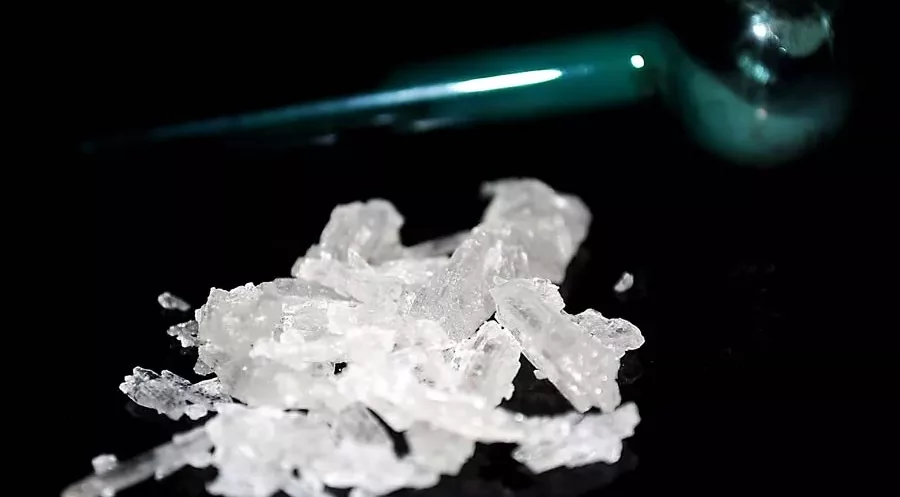Meth is a substance that many people are familiar with. It has been used recreationally for a long time. It’s among the most affordable and accessible drugs on the market. But this accessibility has the unspoken side effect of making it easy to take as much as you want. Meth overdoses are shockingly uncommon, and they have spiked recently. Methamphetamine deaths due to overdose more than tripled between 2015 and 2019.
Read on to learn more about protecting yourself from meth overdose, and how to find effective forms of treatment that can help you put aside crystal for good!
What are Methamphetamines?
Methamphetamines, also known as crystal meth or “meth” for short, is a powerful stimulant that can be harmful to the user and those around them. Methamphetamine is a Schedule II stimulant or controlled substance. This means it has a high potential for abuse and may lead to severe psychological or physical dependence.
Methamphetamine has no accepted medical use in the United States. It affects the central nervous system and increases energy and alertness. Other effects include irregular heartbeat and blood pressure, fast breathing, sweating, loss of appetite, sleeplessness, irritability, and mood issues.
Meth and Substance Abuse: Proven Risks
Methamphetamine can cause serious health consequences and even death. It is highly addictive and can cause permanent brain damage, cardiac arrest, liver failure, increased blood pressure, difficulty sleeping, kidney failure, memory loss, anxiety, and depression. In addition, meth users are at high risk for other serious consequences such as hepatitis B or C, HIV/AIDS, tuberculosis, pneumonia, and dental problems like gum disease or tooth decay (this is also colloquially known as “meth mouth”).
Methamphetamine and other drugs like it also change how the body makes serotonin – a chemical that regulates moods – which can lead to violent behavior and hallucinations. Methamphetamine users who use it as a recreational drug will often become paranoid and aggressive when they use the drug because their bodies do not produce enough natural serotonin anymore. This may make them behave violently toward others or themselves (e.g., suicide attempts).
The truth is that drug abuse in and of itself is commonly viewed as a public health problem. The health risks and mental degradation that often accompanies long-term drug use often can be life-threatening and result in permanent damage.
Without the intervention of treatment and professional medical attention, these dangerous chemicals can be fatal to persons who find themselves unable to halt their usage.
Who is At Risk of Meth Addiction?
Methamphetamine is an incredibly dangerous illicit drug that can lead to addiction very quickly. Abuse of this stimulant drug causes mental and physical changes that make it difficult for users to stop meth use without help.
What are the risk factors for meth addiction? Knowing them may allow for early intervention when it comes to meth use and being able to spot people most at risk of falling victim to this illicit substance.
Genetic History – A family history of meth use, or even other stimulants, can make a person further down the genetic line predisposed to addiction. This is one of the most statistically trackable risk factors. Much the same way that a person with a family history of heart failure is genetically more at risk for that condition, a family history of crystal meth can render generations down the road at risk.
Co-Existing Conditions – Persons with co-existing mental health conditions are often at risk of falling into drug abuse. People with chronic anxiety and depression are chief in that category. This comes from a desire and an aim to try to self-medicate.
Often these people are simply trying to address the pain of their existence at the moment and are not thinking of the other health effects that accompany the drug use. Neurodivergent persons may fall into this category. However, it must be stated that, specifically with regard to attention deficit hyperactivity disorder, there is a false belief and stigma associated with medication subscribed for ADHD.
The typical stimulant which is medically associated with that condition, methylphenidate, is commonly associated with being equivalent to methamphetamines. It is not. This stigma, ironically enough, can result in neurodivergent persons seeking to medicate appropriately and safely running into logistical or societal blockades.
Environmental Factors – This can be anything from the physical environment, to stress factors, to isolation. Factors in one’s life and environment can push persons towards seeking, in extreme cases, intense forms of escapism in the form of a drug habit. From a socioeconomic point of view, it is important to keep in mind that research has shown that regions with lower-income, poverty, and economic/environmental hardships also correlate with increased drug consumption.
What are The Signs of Meth Addiction?

Meth causes the brain to release abnormally high levels of dopamine, a chemical neurotransmitter that plays a role in motivation, pleasure, and reward. When this happens, users experience feelings of euphoria and energy.
At first, meth tends to make people feel more alert, energetic and sociable. But it also makes them anxious and paranoid. After a while, they may develop sleeping problems or lose interest in eating or having sex. They may have trouble keeping up with their responsibilities at work or school and begin to neglect family members or friends.
Meth Addiction Symptoms at a Glance
Some of the signs of meth addiction, at a glance, are:
- Psychotic symptoms, in the form of violent episodes, including threatening people and breaking things in the home
- Dilated pupils
- Loss of interest in appearance or hygiene
- Irritability, restlessness, and anxiety or panic attacks
- Insomnia (sleeping too much) or hypersomnia (sleeping too little)
- Anorexia (loss of appetite) or bulimia (binge eating followed by purging)
Methamphetamine Overdose: The Facts
A meth overdose occurs when someone uses too much of the drug and has life-threatening symptoms that are severe enough to risk or cause death. Drug overdose is one of the leading causes of accidental death in the United States. According to the Centers for Disease Control and Prevention (CDC), drug overdose deaths have increased every year since 2002.
Meth Overdose by the Numbers
In 2016 alone, more than 63,600 Americans died from drug overdoses — up from 52,400 in 2015. These numbers include both prescription painkillers and illegal drugs like heroin. Methamphetamine use and, subsequently, methamphetamine overdose has been rising in recent years, partially because it’s easy to find and cheap compared to other drugs like cocaine or heroin. The possibility of meth overdose depends on many factors, including the person’s approximate age and amount of the drug taken.
Methamphetamine is also dangerous because too much meth can cause an increase in body temperature and heart rate, which can lead to stroke or heart attack. In fact, according to a study published by the CDC in 2018:
- People who use meth are over three times more likely than non-users to die prematurely from any cause other than injury or homicide
- The odds of premature death by meth overdose are even higher when you look only at deaths due to cardiovascular disease
- Meth users are twice as likely as people who don’t use meth to die from cardiovascular diseases like high blood pressure or heart attack
What are the warning signs of meth overdose, then? How can you notice when this might be about to happen, to take action? Meth overdose symptoms may include:
- Tremors or twitching
- Rapid or Irregular heartbeat
- Acute memory loss
- Abnormal breathing
- Chest pain
- Hallucinations
- Agitation or aggression
- Seizures
If you believe you’re witnessing a meth overdose or are about to witness one, the first step would be to call the emergency services and get urgent medical help. Stay with the overdose victim and keep them calm to prevent injury until emergency care arrives.
The Benefits of Getting Addiction Treatment for Meth

Meth overdose is an acute risk of the substance, but that aside, the havoc the habit can wreck on a person’s life, as well as other health consequences associated with it, are enough to justify aggressive medical treatment for the habit. Addiction treatment is perhaps the most important thing that can be done to avoid the risk of meth overdose for someone struggling with the habit.
The treatment process can help with a myriad of health issues. More importantly, overdose is not something to take lightly. If not handled correctly, an experience like that can be final, fatal, and tragic, with no way to walk away from it.
The Treatment Options for Meth Abuse
The addiction treatment process is critical, not just for those at risk of a chronic methamphetamine overdose but anyone suffering from the habit. Treatment starts with detox to rid the body of the dependency on the substance, thus dramatically cutting the risk of overdose to virtually zero. From there, treatment includes therapy to deal with the underlying issues that led to the addiction in the first place.
Much of the drug dependency can be down to feelings of isolation which is why support groups are often heavily utilized in addiction treatment. These support groups can erode much of the stigma persons struggling with drug habits may feel.
Seek treatment for meth addiction today!
If you or a loved one are struggling with a meth or substance abuse habit, contact Best Rehabs In Arizonas! The risk of meth overdose is not something to take lightly.
Reach out to our Admissions staff today, our professional team is standing by and ready to help you take that first step away from addiction and the risk of overdose. Give yourself the break you deserve and reach out now!

